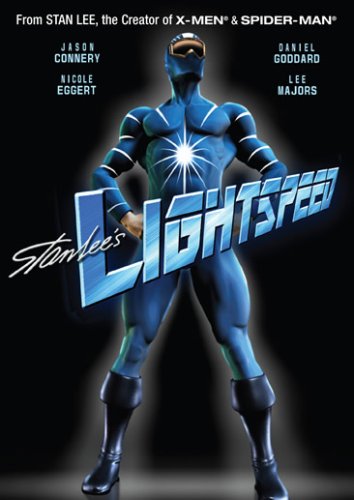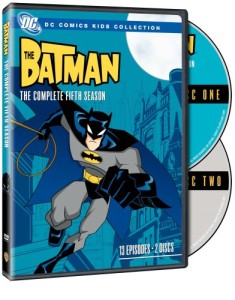 I recently watched the complete fifth season of The Batman. I’d only ever seen one episode, “A Mirror Darkly” (the one with the Flash, of course!) before, and when I decided to watch the two-parter with the Justice League, I figured I might as well watch the rest of the season.
I recently watched the complete fifth season of The Batman. I’d only ever seen one episode, “A Mirror Darkly” (the one with the Flash, of course!) before, and when I decided to watch the two-parter with the Justice League, I figured I might as well watch the rest of the season.
The series follows Batman, a young Robin, and a teenaged Batgirl as they battle the usual assortment of Gotham City villains. While the 1990s Batman: The Animated Series essentially translated the comic-book versions of these characters into a style suitable for animation, The Batman has redesigned virtually everyone…and that’s the main problem I have with the show. They’ve taken the villains and dehumanized them, making them into little more than monsters.
Introducing the League
The main thread for season 5 is showing Batman as he works with the Justice League, with 8 of 13 episodes featuring guest stars. Unlike the Gotham villains, the heroes’ designs are practically lifted from the comics. It’s also a much more Silver Age League (at least compared to the animated Justice League and Justice League Unlimited from earlier this decade)*, with Hal Jordan as Green Lantern, Hawkman as a Thanagarian policeman, and Barry Allen (though his name is never mentioned on screen) as the Flash. Conspicuously absent is Wonder Woman, an oddity considering the larger role given to Batgirl in this series. That, and some of the visuals in the final episode, reminded me of Filmation’s Justice League cartoons from the 1960s.
The season opens with a two-parter pitting Batman against a mind-controlled Superman. Lex Luthor and a host of Batman villains guest star. Oddly enough, I found myself looking up the casting, even though Superman, Lex and Lois are voiced by the same actors as in the Dini/Timm cartoons. The takes on each character were enough different that I didn’t notice the voices at first.
Batman goes on to team up with Green Arrow, the Flash, Green Lantern and Hawkman over the course of the season, as they fight Count Vertigo, Mirror Master, Sinestro and the Shadow Thief. The Green Lantern tie-in, “Ring Toss,” was particularly fun, as the Penguin obtains GL’s ring. He figures out the basics pretty quickly, even though he doesn’t have the experience — or willpower — to use it to its full potential.
The Flash
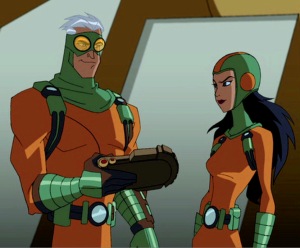 According to the producers, the Flash in this series is Barry Allen, though his real name is never mentioned onscreen and his personality is somewhere between the Timmverse Flash and Impulse.
According to the producers, the Flash in this series is Barry Allen, though his real name is never mentioned onscreen and his personality is somewhere between the Timmverse Flash and Impulse.
The Scarlet Speedster teams up with Batman and Robin in “A Mirror Darkly” (on the first disc of the set). Mirror Master has come to Gotham City seeking components for a weapon (of course), and uses mirror duplicates of heroes — including both Batman and the Flash — to help him steal them. I like the portrayal of Mirror Master as a smug know-it-all mad scientist, and the redesigned costume works fine for me. He’s been given a sidekick/assistant named Smoke, and thankfully the show’s staff resist the urge to point out the pun in the name (though I keep thinking of the episode, erroneously, as “Smoke and Mirrors” because of it).
Mirror Master’s plan proves to be one of those totally bizarre schemes that would ordinarily seem out of place in a Batman story, but feels right at home in a classic Flash story with new pseudo-scientific feats appearing on every page.
On a related note, I could swear I remember an episode of Batman: The Animated Series that also featured a showdown in a room-sized orrery at a planetarium, but I just can’t place it.
Finale
In a sense, there are two series finales. “The End of the Batman” has Batman and Robin going up against Wrath and Scorn, opposite numbers who have dedicated themselves to protecting criminals and wiping out the Batman. They bring in half a dozen Batman villains in on the scheme, one which will not only make them all rich, but end the threat of the Batman for good.
Then the two-part “Lost Heroes” brings the Justice League thread to the foreground, as all the heroes who have guest starred over the season show up just long enough to be abducted, leaving Batman and Green Arrow to track them down. The heroes must battle robots that have stolen their powers, then head off another alien invasion. Robin and Batgirl aren’t left out of the action either, and their reactions to meeting the League — and seeing its headquarters — are priceless.
(This story also has the oddest portrayal of Hugo Strange that I’ve seen, but then I’m mainly used to the version from Legends of the Dark Knight, so I’m not sure what “standard” is. Now that I think about it, he looks like a cross between Dr. Scratchensniff and Ralph the Guard, and now I can’t unsee it.)
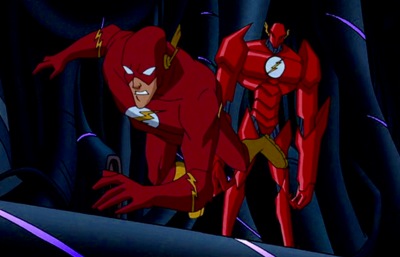
*I realize I’m probably going to compare almost any animated DC show to the DC Animated Universe for quite a while. Even though I grew up on Superfriends in the early 1980s, it was the 1992 Batman series that really resonated with me and my friends in high school. It was a show that actually managed to present complex characters and storylines without talking down to their audience. It featured the best portrayal of Two-Face until this year’s The Dark Knight. The direct-to-video Batman: Sub-Zero was a better Mr. Freeze movie than Batman and Robin, which came out the same year. And it introduced Harley Quinn. How can you argue with that?

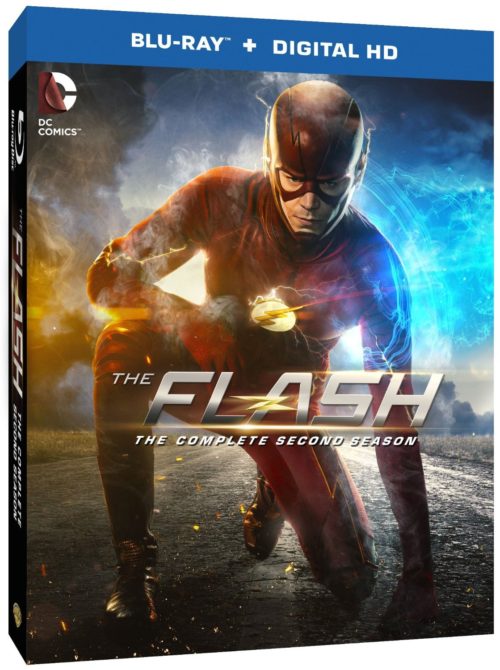
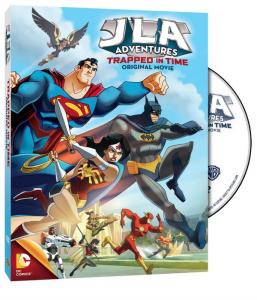
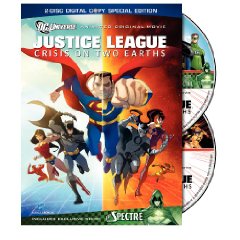

 According to the producers, the Flash in this series is Barry Allen, though his real name is never mentioned onscreen and his personality is somewhere between the Timmverse Flash and Impulse.
According to the producers, the Flash in this series is Barry Allen, though his real name is never mentioned onscreen and his personality is somewhere between the Timmverse Flash and Impulse.
